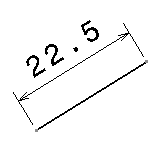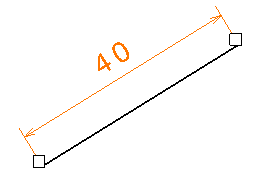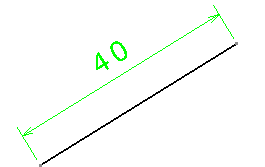Double-click the dimension that you want to turn into
a driving dimension.

The Dimension value dialog box is displayed.
Make sure the Drive geometry check-box is
selected. This dimension will now drive the geometry.
In the Dimension value dialog box, modify
the dimension value by specifying a new length.
Click OK to validate and exit the dialog
box.
The geometry is updated according to the new driving
dimension value.

Click elsewhere in the drawing to deselect the dimension.
The color defined for the Dimensions driving 2D
geometry option in the Elements' Analysis dialog box
is assigned to the driving dimension.

Note:
If you are a DS Passport customer, you can read the QA00000006184 article from the